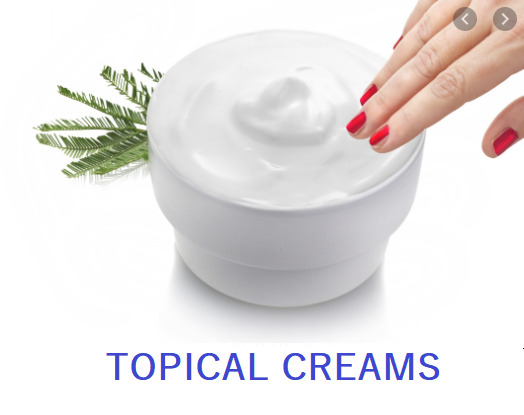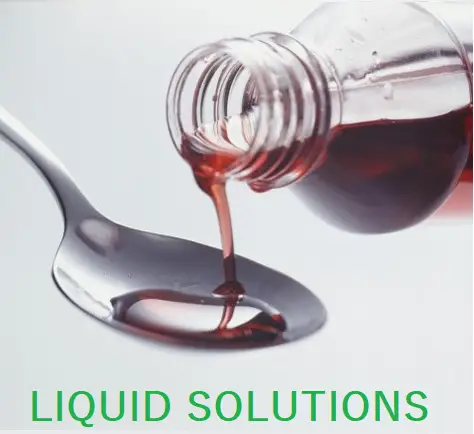SILVER SULPHADIAZINE AND CHLORHEXIDINE CREAM
Chlorhexidine Gluconate + Silver Sulfadiazine is a combination of two antibiotics: Chlorhexidine Gluconate and Silver Sulfadiazine. Chlorhexidine Gluconate is an antiseptic and disinfectant which works by binding strongly with skin. It kills infectious microorganisms and effectively cleans out cuts, wounds, and burns to prevent them from getting infected. Silver Sulfadiazine is an antibiotic. It stops bacteria from producing folic acid, a vitamin required for bacterial multiplication.
Silver sulfadiazine, a sulfa drug, is used to prevent and treat infections of second-and third-degree burns. It kills a wide variety of bacteria.
Good Documentation Practices SOP
EXPERT ADVICE FOR CHLORHEXIDINE GLUCONATE + SILVER SULFADIAZINE
- Clean the wound and then apply the cream to the affected area using a sterile gloved hand or a sterile spatula.
- Apply it once or twice daily and re-apply to any areas from which it gets removed due to activity. Burn areas should be covered with the cream at all times.
- It may cause minor burning, stinging, or irritation when applied. Inform your doctor if this does not go away.
- Avoid contact with your eyes, nose, or mouth. Rinse it off with water if you accidentally get the cream in these areas.
FAQ FOR CHLORHEXIDINE GLUCONATE + SILVER SULFADIAZINE
Q. Can I stop taking Chlorhexidine Gluconate+Silver Sulfadiazine when I feel better?
No, do not stop taking Chlorhexidine Gluconate+Silver Sulfadiazine, and complete the full course of treatment even if you feel better. Your symptoms may improve before the infection is completely cured.
Q. How long does Chlorhexidine Gluconate+Silver Sulfadiazine takes to work?
Usually, Chlorhexidine Gluconate+Silver Sulfadiazine starts working soon after taking it. However, it may take some days to kill all the harmful bacteria and make you feel better.
PURPOSE: This Master Formula is written to describe the formulae, manufacturing procedure, specifications, packing details of dosage form.
SCOPE: This MFR is performed and is applied during the manufacturing of dosage form.
RESPONSIBILITY / ACCOUNTABILITY: It is the responsibility of Manufacturing Chemist to follow and adhere to this SOP. The Production Pharmacist, QC/QA Manager are accountable for the strict adherence to the master formula.
COPY ISSUED TO:
1. Master Copy : Manager Quality Assurance
2. Copy No. 1 : Production Pharmacist
3. Copy No. 2 : Manager Quality Control
4. Copy No. 3 : Ointment Section
| PRODUCT NAME:SILVER SULPHADIAZINE AND CHLORHEXIDINE CREAM | BATCH SIZE: 500 Kg |
| PRODUCT REFERENCE CODE: | UNIT SIZE: 20 g |
| GENERIC NAME: N.A. | PACK SIZE: 24 x 12 x 20g |
| DOSAGE FORM: OINTMENT | STRENGTH: N.A. |
| DEPARTMENT: OINTMENT DEPARTMENT | EXPIRY DATE: AFTER 36 MONTHS FROM THE DATE OF MANUFACTURING |
COMPOSITION:
| SILVER SULPHADIAZINE | U.S.P. | 1.0% w/w |
| CHLORHEXIDINE GLUCONATE solution | U.S.P. | 0.2% w/w |
SPECIMEN UNIT CARTON:
EQUIPMENTS TO BE USED:
| SR. NO. | NAME OF EQUIPMENT | ASSEMBLING AS PER SOP NO. | CLEANING AS PER SOP NO. |
| 1 | Wax Vessel | ||
| 2 | Water Vessel | ||
| 3 33 | Mixing Vessel | ||
| 4 | Storage Container-I (500 Kg) | ||
| 5 | Semiautomatic Aluminium Tube Filling & Crimping Machine |
RAW MATERIALS: –
| S.NO. | INGREDIENTS | STD | Theoretical Quantity Req. | Overages % | Total Quantity Used |
| 1 | CM – 1000 | B.P. | 16.667 | 16.667 KG | |
| 2 | CETOCETYL ALCOHOL | B.P. | 50.000 | 50.000 KG | |
| 3 | CHLORHEXIDINE GLUCONATE | U.S.P. | 1.000 | 10.00 | 1.100 KG |
| 4 | LIQUID PARAFFIN LIGHT | B.P. | 25.000 | 25.000 KG | |
| 5 | METHYL PARABEN SODIUM | B.P. | 0.500 | 0.500 KG | |
| 6 | PROPYL PARABEN SODIUM | B.P. | 0.133 | 0.133 KG | |
| 7 | SILVER SULPHADIAZINE | U.S.P. | 5.000 | 5.00 | 5.25KG |
| 8 | WHITE PETROLEUM JELLY | U.S.P. | 80.000 | 80.000 KG |
| S.NO. | NAME OF THE MATERIAL | THEORETICAL QUANTITY REQ. | FOR RECORD | TOTAL QUANTITY USED |
| 1 | ADHESIVE TAPE ROLL (NEOMED) | 4.000 | 4.000 NOS | |
| 2 | UNIT CARTON | 25000.000 | 3.000 | 25003.000 NOS |
| 3 | OUTER CARTON | 1250.00 | 2.000 | 1252.00 NOS |
| 4 | TUBES | 25000.000 | 25000.000 NOS | |
| 5 | CELLO TAPE (PLAIN) | 3.000 | 3.000 NOS | |
| 6 | CORRUGATED BOXES B – 43 | 87.000 | 87.000 NOS |
PACKING MATERILAS:-
MANUFACTURING SPECIFICATIONS:
Average fill of each Tube is 20 grams.
Wight variation limit allowed in each filled Tube is 25000+ 200 mgs.
Melt the ointment base at the maintained temperature of 70˚ C.
Use accurate weight quantity of water to make up the final weight of cream.
The temperature of primary area should not be more than 30˚C.
Yield:
Theoretical Yield is 25000 Tubes.
Expected Practical Yield is 25000 + 2% Tube.
Packing Details:
Transfer the cream from storage tank to Semiautomatic Aluminium Tube Filling & Crimping Machine and start filling and then Crimping of the tubes as per its SOP.
Pack the filled tubes in unit carton.
Pack such 12 tubes in each outer carton.
Seal the outer carton with cello tape.
Pack the 24 outer cartons in specified corrugated B-43 box to give a pack size of 24 x 12 x 20 g Tubes.
Seal the each corrugated box with adhesive tape and label it properly by affixing the specified label.
MANUFACTURING PROCESS:
Melt 16.667 kgs of Ceto Macrogol- 1000, 50 kgs of Cetocetyl Alcohol, 25.00 kgs of Liquid Paraffin Light and 80.0 kgs White Petroleum Jelly in a Steam Heat Wax Melting Vessel by operating it as per its SOP at temperature 70° C.
Heat 250.00kg of water at 70° C in Water Vessel by operating it as per its SOP.
Filter and transfer the melted base through Stainless Steel Sieve no. 100 to the mixing vessel.
start the machine as per its SOP.
Dissolve 0.500KG M.P.B.S in 4.00kg of water and transfer it to the bulk batch .
Dissolve 0.133kg P.P.B.S in 4.00kg of water and transfer it to the bulk batch.
Take 30.00kg of hot water and suspend 5.250kg of silver sulphadiazine and pass it through colloid mill to achieve the slurry of uniform particle size by operating it .
Add the colloid silver sulphadiazine to the bulk batch and mixed it.
Dissolve 1.100kg of chlorhexidine gluconate in 10.00 kg of water and transfer it to the bulk batch.
Slowly add rest of water to the bulk batch.
Cool the cream to the room temperature by running the water in the jacket of mixing vessel.
Mix the whole batch for 90 minutes while running the water in the jacket.
Send the sample to Quality Control Department for bulk testing.
After approval from Quality Control Department, transfer the cream to storage tank.
IN-PROCESS CONTROLS:
The following in-process controls should be maintained during the processing:
Check Raw materials used for manufacturing purpose are all approved materials and have ‘Released’ labels fixed on it.
All weighed Raw materials should be counter-checked by Manufacturing Chemist. If any discrepancy is noticed, it should be immediately brought to the notice of Production Pharmacist and QC/QA Manager.
Physical characteristics of Raw material like colour, odour, and consistency are checked before compounding.
The total weight of bulk ointment / cream should be checked in the presence of Assistant Manufacturing Chemist and record the same in Batch Manufacturing Record.
pH of the bulk should be checked and it should be with in specified limits.
Bulk sample should be sent for analysis to Quality Control Department before starting the filling and sealing stage.
While the tube filling operation is on, the Manufacturing Chemist should check weight of net filled quantity per tube at the interval of 30 minutes by checking the tare weight of empty tube and gross weight of the filled tube. Record for the same should be kept in Batch Manufacturing Record.
The ‘fill weight’ of ointment or cream per tube should not be less than the labelled amount. Limit for Weight Variation: Weight claimed on the carton + 200 mg
Manufacturing Chemist will also ensure that the crimping of the filled Aluminium tubes, sealing of plastic tubes is appropriate and embossing of batch number and manufacturing date is conspicuous. Also the quality of embossing will be controlled by adjusting pressure exerted by the jaws, so that pinholes are not developed on the embossed letters / numbers.
The inner and outer cartons should be checked thoroughly for proper batch coding.
Manufacturing Chemist and Production Pharmacist should randomly check that the correct no. of inner cartons are being packed in each outer cartons and also the correct number of outer cartons in each shipper is exactly the same as that shown in proof.
Intimation should be sent to Quality Control Department for finished product sampling and testing.
After the completion of filling and packaging, the coded cartons should be accounted for and rejected printed material should be destroyed in the presence of QC/QA Manager. Maintain the destruction of the same in the Batch Manufacturing Record.
It will be ensure that filling or packaging equipment has been properly cleaned.
Filling or packaging of next product should be commenced only after getting the ‘Line Clearance’ of the previous product, from the IPQA.
OTHER RELATED POST – MASTER FORMULA OF DERMIFRESH POWDER (SANDAL EFFECT)




